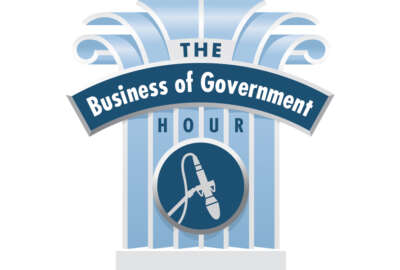Hubbard Radio Washington DC, LLC. All rights reserved. This website is not intended for users located within the European Economic Area.
Too few DoD program managers using agile methodologies, GAO cautions
For what auditors found and how DoD can get on track, Federal Drive with Tom Temin turned to the director of contracting and national security acquisitions at t...
Best listening experience is on Chrome, Firefox or Safari. Subscribe to Federal Drive’s daily audio interviews on Apple Podcasts or PodcastOne.
More than 18 months ago, the Defense Department embarked on what it called a new pathway for acquiring software, one its most crucial commodities. But too few of DoD’s program managers are using agile methodologies and continuous delivery. For what auditors found and how DoD can get on track, Federal Drive with Tom Temin turned to the director of contracting and national security acquisitions at the Government Accountability Office, Shelby Oakley.
Interview transcripts:
Tom Temin: Ms. Oakley, good to have you back.
Shelby Oakley: Thanks for having me. Tom.
Tom Temin: Tell us about what you found this idea of the pathway to new software acquisition techniques, I guess it’s one of several acquisition pathways DoD established back then.
Shelby Oakley: We found that DoD has taken a lot of steps to modernize its software development approaches in response to all these emerging threats that are occurring and software being one way in which the Department of Defense can respond. And so they’ve done things like the development of that software acquisition pathway, and through the establishment of things like policies and guidance to help implement that pathway. But what we seen really is that they report using more modern software practices, but in practice, we’re not really seeing that as much.
Tom Temin: And we’re talking about software acquisition, not just for business systems, but also for embedded and weapon systems also – correct?
Shelby Oakley: Correct. Yeah, our recent report that we issued focus on both weapon systems and business IT systems, it was information that we had originally reported in two separate reports in June. And we summarize those findings in this report, and they’re very similar. The findings from both reports are very similar in terms of practice versus what programs are saying they’re doing.
Tom Temin: Give us an example of a program that says it’s doing this, but it’s not really and how did you discover that?
Shelby Oakley: Sure. So we survey these programs, they report what they’re doing to us. And so the Army’s integrated Air and Missile Defense program, IAMD, they report that they’re using agile processes, but they’re reporting software delivery times between 10 and 12 months. And really, that isn’t in line with what industry standards are for frequent deliveries of software that are the underpinning of an agile development process, it’s recommended every couple of weeks, even that software is delivered. So that kind of timeframe of 10 to 12 months is much more significant than what will be recommended by industry. Conversely, the Army’s Integrated Visual Augmentation System, they are reporting using an agile software development program. And they are in fact delivering software at times of less than three months, sometimes even at three week increments. And so it’s kind of those metrics that we’re taking a look at, is what are you saying you’re doing as a program versus what are you actually doing in practice.
Tom Temin: In some ways, it sounds as if that delivery schedule or the frequency of capability, modules of software backs up not just to the software acquisition itself, but in the way that you run your program. Because if you have a big over arching goal for say, an integrated system of communications and battlefield management, whatever the case might be, then you have to design your program delivery to match the fact that you can get every few weeks or a couple of months delivery of software, as opposed to waiting a year till something gets done, which you think and hope will be comprehensive and do what you hope it will do.
Shelby Oakley: Absolutely, I mean, structuring your program around that type of approach really allows for customers to be engaged early on in the program and on a continual basis. And it really provides this kind of risk reduction in terms of being able to assess regularly whether we are, funding a program that’s going to be useful, or if we’re on the path of failure and looking at outdated technology. So really, kind of structuring that program, all with this kind of incremental agile approach in mind is exactly what was intended with the software acquisition pathway within the Department of Defense.
Tom Temin: We’re speaking with Shelby Oakley, director of contracting and national security acquisitions at the GAO. And what are your recommendations for those programs that say we’re using agile but aren’t actually using agile? I mean, you can say well go ahead and use agile, but that’s not probably what you recommended directly.
Shelby Oakley: Yeah, so we didn’t make any new recommendations in this current report, because it was just a summary of prior reports. And in addition, it’s the first in a body of work that we plan to do on how major weapon and IT programs are implementing these modern software development practices. But in our report on the major IT systems this summer, that team did make a recommendation related to the fact that DoD didn’t have data or tools necessary to oversee the programs that are using these software pathways. And we recommended that DoD take some steps to automate data collection to be able to understand how the these pathways are being used. And the Department of Defense concurred. And so I would imagine that we will have more recommendations going forward as we continue our look at how DoD is continuing to modernize its software development practices.
Tom Temin: And are there other metrics, other pieces of data that they can collect centrally that indicate the use of agile techniques and the pathway in addition to delivery schedules?
Shelby Oakley: Yeah, absolutely. A lot of these modern tools and practices are based upon direction from Congress in the National Defense Authorization Act, and also from the Defense Science Board and the Defense Innovation Board, who have done a lot of work looking at kind of modern approaches. And some of the things that they recommend are things like development of a software factory, which brings together kind of software tools to be able to help users and management work together or delivery of a minimum viable product, right. Are you just kind of pushing out the things that are the minimum of what you need and continuing to iterate? You have this focus on iterative development. All these things really kind of come together to provide for this modern approach to software development. And those are the kinds of things that DoD is continuing to implement, and continuing to focus on in its policies and guidance. And hopefully, eventually in its practices going forward.
Tom Temin: Because there’s a big human capital or people skills components to switching because you might have a whole crew that knows how to do the old fashioned method of buying software, but you can’t necessarily change people on a dime, you either need different people or you need some training.
Shelby Oakley: Yeah, we have reported that without providing training on these new methods, programs are really at risk of falling back into old ways of doing development. And unfortunately, we aren’t seeing programs providing that training, we only saw that less than one-six of major defense acquisition programs and one-third of those middle tier acquisition programs reported providing training to their program staff on these modern software development practices. And so training is a real focus. In addition, a lot of these programs reported to us that they are experiencing challenges bringing on the right kinds of people, getting contractor and government staff with the right expertise in place to be able to execute these modern development approaches. And so, this work is going to take a long time, and it’s going to take a huge cultural shift within the Department of Defense to be successful. And DoD is really at the beginning of this effort, and so we’ll see over the next several years how it makes progress toward these goals.
Tom Temin: And would you say that the important thing is that they have continuity in the policy here so that they can have the time it takes to catch up with the policy in the practice among the different groups?
Shelby Oakley: Yeah, it’s gonna take sustained leadership and attention. And so the policy just came out, and programs are beginning to use it and understand how to use it. And I think that that’s certainly something that the leadership is going to have to focus on is how to kind of continue to provide necessary tools and guidance for programs to be able to implement this policy, but to stay the course on providing this as a pathway for these programs to be able to achieve what they need to with regard to software.
Tom Temin: And software is only one of, I think, half a dozen pathways for acquisition of other commodities. Safe to say the GAO is looking at those other pathways and practices also?
Shelby Oakley: Absolutely. As we continue to look at the major capability pathway, in addition to the middle tier of acquisition pathway that we assess through our annual weapons assessment, and then our folks in our information technology team take a look at the business system and software pathway additionally through their work. And so we have a lot of ongoing work that’s taken a look at how DoD is implementing and executing under these new pathways and this new acquisition approach.
Tom Temin: Shelby Oakley is director of contracting and national security acquisitions at the Government Accountability Office. Thanks so much.
Shelby Oakley: Thank you.
Copyright © 2024 Federal News Network. All rights reserved. This website is not intended for users located within the European Economic Area.
Tom Temin
Tom Temin is host of the Federal Drive and has been providing insight on federal technology and management issues for more than 30 years.
Follow @tteminWFED
Related Stories
Creative, responsive, agile underscored federal IT, procurement in 2020
On DoD

WEDNESDAYS, 11 A.M. & 2 P.M.
Each week, Defense Reporter Jared Serbu speaks with the managers of the federal government's largest department. Subscribe on PodcastOne or Apple Podcasts.
Related Stories
-
Emerging approaches of agile government: A conversation with Angela Evans The Business of Government Hour
-
Interoperability is key to agile software development Federal Insights
-
Creative, responsive, agile underscored federal IT, procurement in 2020 Reporter's Notebook





